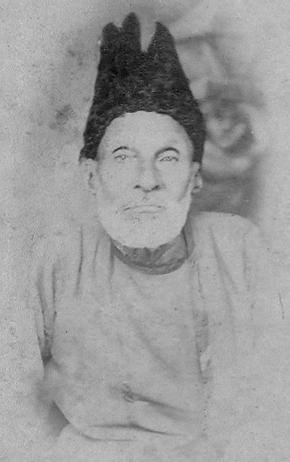Understanding Ghalib and his play of languages
02/11/2021 By RuneLite
Hasan Abdullah
‘Ghalib: A Wilderness at My Doorstep — A Critical Biography’ by Mehr Afshan Farooqi is a well-referenced work (over 150 references, 580 notes and three appendices) comprising Timeline, Introduction, and his entire life and work divided into nine chapters. These include his early life, background stories of the discovery of discarded Urdu verses, journey to Calcutta, transition from Urdu to Persian, reasons for his Urdu divan’s popularity and its comparison with his Persian divan, analysis of their forewords and afterwords, passionate engagement with Persian, and eventual return to Urdu.
Acknowledging that posterity has finally declared Ghalib “as the greatest Urdu poet of all time”, Farooqi has attempted to map ‘Ghalib’s textual history’ in order to “help us interpret his decision to lean more towards Persian when Urdu was in its golden age.” She says: “Perhaps Ghalib was thinking in Persian and writing in Urdu... or did he find Urdu inadequate when it came to expressing his thoughts...” However, her subsequent elucidation of Ghalib’s Urdu poetry in the same paragraph, great acclaim for his Urdu — and not Persian — poetry, his composing a large body of poetry in Urdu before writing Persian poetry, and returning to Urdu in old age, do not seem to square up with her own analysis of his ‘thinking in Persian and writing in Urdu’.
“In fact, he often laments inadequacy of language to express his own thoughts,” she writes. Probably, being the established language of literature, Ghalib attached more importance to Persian, made great efforts to master it, and shifted to Persian from Urdu — and, towards the end, returned to Urdu, because, it being his mother tongue, he could write with greater felicity. Quoting a Persian couplet, Farooqi claims: “Ghalib gave more importance to his Persian compositions than Urdu”. Ghalib, however, balances the quoted couplet by flaunting his poetic skills in Urdu in an Urdu verse: “To those who ask, ‘Can Persian look at Urdu enviously’?/ Just recite a verse of Ghalib, telling them, like this.”

Citing the contrast between the style of Urdu and Persian letters, Farooqi concludes: “Urdu readership was Ghalib’s immediate domain. Persian was a testament to his connection with the deep classical tradition of poetry.” This seems contrary to what Farooqi claims, because Ghalib took Persian — and not Urdu — letter writing as a literary activity, and that is why, initially, he was also against the publication of his Urdu letters.
Farooqi suggests “changed literary culture [as] not the least important” reason for “finally placing him [Ghalib] on a pedestal as the greatest Urdu poet of all time”. The universality and timelessness of his Urdu poetry — as the most important reasons for his recognition as the greatest Urdu poet — perhaps go without saying. She opines that “one reason why Ghalib dominates over his contemporaries, as well as the famous poets of 18th century, could be the power of publishing”. However, though Kalidas, Kabir and Amir Khusro — precursors to Ghalib — dominate the poetry scene, they wrote and departed prior to the advent of printing press in India.
During his journey to Calcutta, Ghalib “kept pouring his heart out in letters”, informs Farooqi. Importantly enough, during this journey, he also ‘kept pouring his heart out in’ Urdu poetry, and unravelled the fundamental secrets of all-encompassing Nature. Look how beautifully he expresses dialectical unity between life and death: “Lust is engaged in many a different delightful task/ If there had been no death, life would have held no joy.”
Farooqi has provided us with an invaluable wealth of information regarding Ghalib’s history, but seems to be missing the wood for the trees. Ghalib has become ‘the greatest Urdu poet of all time’ — probably because his couplets are expressed in the most exquisite language using devices such as wordplay, hyperbole, irony and paradox, reflecting diverse situations, depicting a range of human emotions and providing deep insights into man’s life and his relationship with Nature.